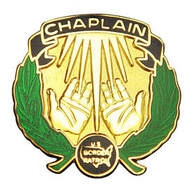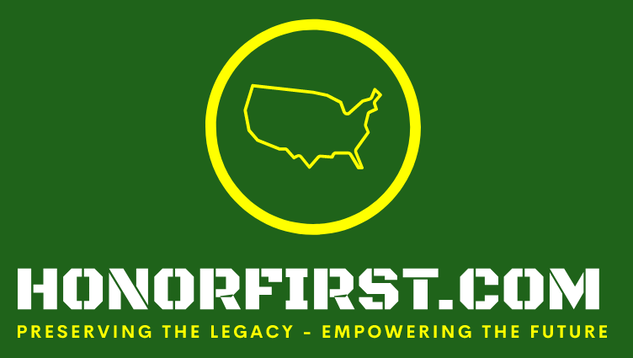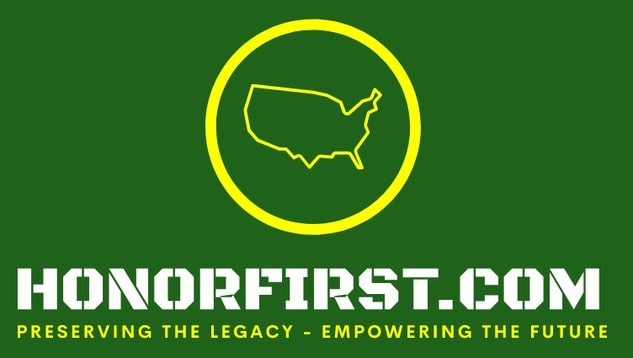September 4 - September 10Good morning! Welcome to another This Week in USBP History! Before I jump into this week's intro, let me acknowledge that This Week in USBP History celebrates its first anniversary on September 6. The first email I sent was unsolicited to three HQ GS-15s. Today, there are 224 recipients and each one a subscriber. Thank you for reading! Now to the intro... What is the Border Patrol's culture and how did it originate? Admittedly, what I am about to write will provide only the barest framework of an answer and would best be covered in detail in a book (what do you think Joe, maybe Volume IV?). So, it's not going to provide a complete answer but hope to entertain and stimulate thought. As you read the following, remember that an organization's culture is defined by its leadership but lives in its workforce. If leadership fails to define culture, it will meander and undesirable characteristics may emerge. When I think of the beginnings of the Patrol's culture, the first thing that comes to my mind is the January 1986 interview of Wesley Stiles (1898-1987). Wesley was one of the earliest Patrol Inspectors (PI) having entered on duty July 28, 1924 in Del Rio, Texas. Concerning performing the job of a PI, Wesley said, "No one knew what we were supposed to do or how we were supposed to do it... So we just walked around and looked wise." I jokingly tell people that not much has changed in 98 years, and that would be a great quote for a signature block. But, on a serious note, it lays a cultural foundation that is still part of the Patrol today. In the absence of guidance, the Patrol and its employees will show initiative by stepping forward, making it up, and doing what they think is right. Along the lines of Wesley, I think of Jeff Milton (1861-1947). As per documents that supported his retirement in 1932, he was neither a Border Patrol Inspector nor a member of the Border Patrol. He was a well-known law enforcement officer in the El Paso District, which encompasses modern day Tucson, El Paso and Big Bend Sectors. It is thought that the leaders of the newly formed Border Patrol used Jeff Milton's rugged independence as an example for new inspectors to follow which may have led to him mistakenly being considered the first Border Patrol Inspector. Jeff's rugged independence provided an example of confidence and bravery, individual and organizationally, to make decisions and charge forward. Not to mention that he was a tough-as-nails gunfighter in his younger years. Concerning the Patrol's motto, Honor First, I have to wonder if it was created to guide the Patrol and its PI's, so that their rugged independence wouldn't run amok, providing a higher purpose and authority. Unfortunately, today the Patrol continues to miss the cultural opportunity to define Honor First. However, Chief of the Border Patrol Rodney Scott had a vision to create an op-ed and Live Honor First was the result. The paper was disseminated via email but without any follow-up to the workforce. The Patrol's values are codified in its awards system, the USBP Honorary Awards. The system is designed to recognize administrative excellence, heroism and valor, law enforcement actions, lifesavings efforts, and service. If you're curious about an organization's values, look no further than why and how they recognize their employees. My experience and observations, have led me to say, "The Patrol's greatest strength is also its greatest weakness. It is the Patrol's fearlessness to confidently step outside of its assigned lane to do what it perceives to be right." To me, that statement embodies the sentiments of Stiles, Milton and Honor First. Further, far more often that not, the Patrol and its employees achieve greatness when stepping outside of its lane due to the caliber and competence of the workforce. Wrapping up this intro, I remember one of my peers at HQ telling me that the Border Patrol, individually and organizationally, is a great partner, supportive and steadfast... But only as long as the Patrol's goal is shared by the other. If the other individual or organization does not share the Patrol's goal, the Patrol will still pursue its goal by going around, over, under or through any obstacle. I present that the incredible competence of the workforce coupled with the following provides a great foundation for describing the Patrol's culture:
I'm sure there's much more I could have added. I hope you enjoyed the intro and it got you thinking... Now to this week's email! We have tons of documents, We celebrate the heroism of five Newton-Azrak Award recipients on the anniversaries of their action. We also remember three of our fallen on the anniversaries of their deaths. Have a great week! Cliff PS -
Esprit de Corps The workplace climate resulting from a combination of organizational pride and employee morale.
Esprit de corps is reinforced through the shared goals, mission and values of the organization and its employees. The definition turns Esprit de Corps into a simple formula and defines parts that comprise organizational pride and employee morale. Esprit de Corps = Organizational Pride + Employee Morale Esprit de Corps is the key to a healthy organization and engaged employees. Honor First is foundational to the Border Patrol's organizational pride and integral to its Esprit de Corps.  Documents/Events 1918
Newton-Azrak Award Action Anniversaries Follow this link to see examples of USBP employees Upholding Honor First.
1996 Richard B. Holmes Border Patrol Agent McAllen Sector Joseph E. Kempa Border Patrol Agent McAllen Sector Michael W. Richardson Border Patrol Agent McAllen Sector Andrew W. Schutt Border Patrol Agent McAllen Sector Austin L. Skero II - photo Border Patrol Agent McAllen Sector On September 10, 1996, agents from the Brownsville Station came under hostile fire while in performance of their assigned duties. During the encounter, Agent Rodelfo Martinez was wounded on the right arm. His fellow agents, Michael W. Richardson, Joseph E. Kempa, Andrew W. Schutt, Austin L. Skero II, and Richard B. Holmes, were performing line watch duties in an area along the Rio Grande River, approximately seven miles east of the Gateway International Port of Entry at Brownsville, Texas. The agents were working an area notorious for illegal alien and narcotics smuggling. The immediate actions of the agents involved in the fire fight resulted in saving Agent Martinez’s life and not allowing themselves to succumb to the hostilities brought against them during the exchange of gunfire. These agents performed heroic and human acts during an emergency while under extreme stress and displayed exemplary courage under fire. Agents Skero and Holmes were directly in line with the assailants, and Agents Kempa and Martinez and were initially pinned down by gunfire directed at Agents Kempa and Martinez. Bullets were landing all around them in their semi-covered position; however, when the assailants directed their gunfire at Agents Richardson and Schutt, Agents Skero and Holmes, without regard for their personal safety, moved to assist Agents Martinez and Kempa. Agent Holmes took up a position to protect Agents Martinez and Kempa. He assisted Agent Kempa in administering first aid to Agent Martinez. Agent Skero continued to engage the assailants who were still firing at Agents Richardson and Schutt. After the shooting had stopped, Agent Skero returned to assist in administering first aid to Agent Martinez. HonorFirst Note - Agent Rodelfo Martinez would be awarded the USBP Commendation Medal with a "V" device for extraordinary heroism and the USBP Purple Cross for wounds received in the scope of duty. USBP Fallen As of May 16, 2022, the U.S. Border Patrol has suffered 152* fallen. Titles:
The facts regarding each officer are presented without major editing of the "language of the day" found in the reports detailing the circumstances of each event. This is done to provide the reader an association with historical timeframes. Employees who died in the line of duty due to being exposed to deadly illnesses will not have the cause of death listed. *With the exception of two of the fallen immediately below, all names are listed (or in the process of being included) on the official Honor Roll of U.S. Border Patrol Fallen and inscribed on the National Law Enforcement Officers Memorial. The U.S. Border Patrol should fix these discrepancies. HonorFirst.com honors both of the fallen.
1929
Myles J. Scannell Date of Birth: December 19, 1895 Entered on Duty: September 27, 1921 Title: Senior Patrol Inspector End of Watch: September 9, 1929 Details: Senior Patrol Inspector, Myles J. Scannell, Marfa, Texas, was shot and killed on September 9, 1929, on the banks of the Rio Grande River near Polvo, Texas, southeast of Presidio. Inspector Scannell was working alone and apparently was attempting to arrest several aliens. Signs indicated that, while walking with the individuals he had in custody, Inspector Scannell was shot from ambush by someone else. His body bore two bullet and fifteen stab wounds. There is no information available concerning whether or not the killer or killers were identified or apprehended. Inspector Scannell had entered the Service as a Mounted Watchman in September 1921, at Presidio. He was among the first Patrol Inspectors to be appointed to the Border Patrol in 1924, and became a Senior Patrol Inspector in July 1926. See this 1929 testimonial from his brother officers written the day after his murder. Here is a cleaner version of the document. Survivor benefits - As per this document, his wife received $78.74 per month for her and their child. Gravesite 1941 Robert J. Heibler Date of Birth: January 28, 1916 Entered on Duty: April 30, 1941 Title: Patrol Inspector End of Watch: September 7, 1941 Details: During the evening of September 7, 1941, Patrol Inspectors Robert J. Heibler and Eldon C. Wade were on duty inspecting traffic on U.S. Highway #90 about three miles west of Uvalde, Texas. At approximately 9:00 p.m., one of the road flares used to warn approaching traffic was blown out by the wind, and Patrol Inspector Heibler, while relighting it, was struck by a passing automobile and dragged about 20 feet. The automobile did not stop and Inspector Wade did not pursue it at the time feeling that it was more important that he render first aid to Inspector Heibler. He began artificial respiration. About 15 minutes later, a physician reached the scene of the accident, gave Inspector Heibler an injection of adrenalin, and continued artificial respiration; however, the officer died within a few minutes. Gravesite 1946 Keith Connelly Date of Birth: December 11, 1946 Entered on Duty: June 21, 1971 Title: Special Agent (Anti-Smuggling) End of Watch: September 6, 1989 Details: On September 6, 1989, at 1:45 a.m., Anti-Smuggling Agent Keith Connelly was shot by alien smugglers in the city of Fresno, California, where he died shortly thereafter. He was working an undercover operation accompanied by his partner, Ted Jordan, who was also shot but survived the ordeal. The Fresno, California Police Department responded to the emergency assistance call and apprehended the suspects who were turned over to the FBI for prosecution. Keith Connelly joined the U.S. Border Patrol in June 21, 1971, in Chula Vista, California, being assigned to the San Clemente Station. He then transferred to Rouses Point, New York, in September 1975, and worked along the Northern Border until reassigned to San Clemente in May 1978. In 1983, he was transferred to Fresno, California, where he became a Senior Border Patrol Agent in December 1986. In August 1988, he was promoted to Special Agent assigned to the Fresno Anti-Smuggling Unit where he served until the time of his death. Burial Details Unknown
Comments
|
Clifford GillBlog author, retired U.S. Border Patrol Assistant Chief and, current U.S. Border Patrol employee advocate. Ray HarrisSite founder and owner, former Supervisory Border Patrol Agent and retired Immigration Special Agent. Joseph BancoU.S. Border Patrol historian and retired Deputy Chief Patrol Agent. Archives
July 2024
I prefer that you leave comments. However, if you wish to contact me, please do so by emailing [email protected].
|
- Home
-
For USBP Applicants
-
USBP Pages and Links
- Firearms Qualification Course
- Military Time Buy Back
- Station MWRs
- Transitioning Out of the USBP
- Fast & Furious
- U.S. Border Patrol Fallen >
- Honor First and Esprit de Corps
- USBP Photo Galleries
- U.S. Border Patrol History >
- U.S. Border Patrol Honorary Awards
- Upholding Honor First >
- U.S. Border Patrol Authorized Devices
- Border Patrol Stories
- What's Important Now - Academy Podcast
- Badges
- Veterans
- Tips for the Media
- Links
- Acronyms
- Border Patrol Locations
- Sector/Station FaceBook Pages
- Ten Codes
- Online Forums
- Search
- Home
-
For USBP Applicants
-
USBP Pages and Links
- Firearms Qualification Course
- Military Time Buy Back
- Station MWRs
- Transitioning Out of the USBP
- Fast & Furious
- U.S. Border Patrol Fallen >
- Honor First and Esprit de Corps
- USBP Photo Galleries
- U.S. Border Patrol History >
- U.S. Border Patrol Honorary Awards
- Upholding Honor First >
- U.S. Border Patrol Authorized Devices
- Border Patrol Stories
- What's Important Now - Academy Podcast
- Badges
- Veterans
- Tips for the Media
- Links
- Acronyms
- Border Patrol Locations
- Sector/Station FaceBook Pages
- Ten Codes
- Online Forums
- Search


 RSS Feed
RSS Feed
